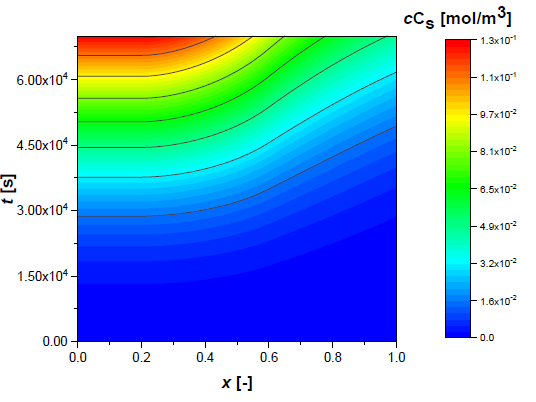Intraparticle Model for Non-Uniform Active Phase Distribution Catalysts in a Batch Reactor
Emiliano Salucci, Vincenzo Russo, Tapio Salmi, Martino Di Serio, Riccardo Tesser
ChemEngineering 2021, 5(3), 38; https://doi.org/10.3390/chemengineering5030038
Abstract
The study and the understanding of the importance of the morphological properties of heterogeneous catalysts can pave the way for important improvements in the performance of catalytic systems. Non-uniform active phase distribution catalysts are normally adopted for consecutive reactions to improve the selectivity to the desired intermediate product. Attributes on which minor attention is paid, such as the distribution and thickness of the active phase, can be decisive in the final rationale of the catalyst synthesis strategy. Starting from a previous work, where a single non-uniform active phase model for catalyst particles was developed, a key step to control the entire system is to include the bulk-phase equations and related transport phenomena. For this purpose, this work proposes a modeling approach of a biphasic reactive system in a batch reactor in the presence of three different kinds of catalytic particles (egg shell, egg white, and egg yolk) whose distinction lies in the localization of the active zone. The reactive network consists of a couple of reactions in series, which take place exclusively on the solid surface, and the intermediate component is the main product of interest. To reveal the influence related to the type of catalyst, an extensive parametric study was conducted, varying several structural coefficients to highlight the changes in the intraparticle and bulk concentration profiles of the different chemical species. The main results can be considered of wide interest for the chemical reaction engineering community, as it was demonstrated that mass and heat transfer limitations affect the catalyst performance. For the chosen system, the egg shell catalyst normally led to better catalytic performances.

